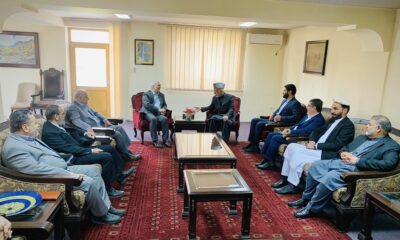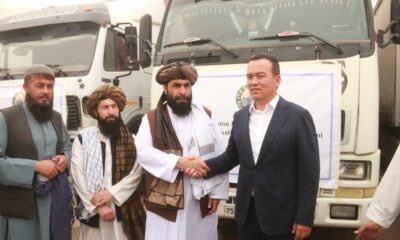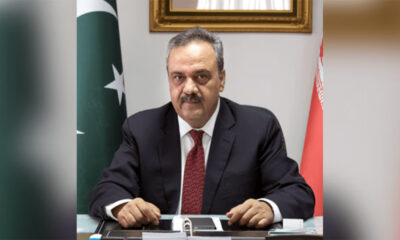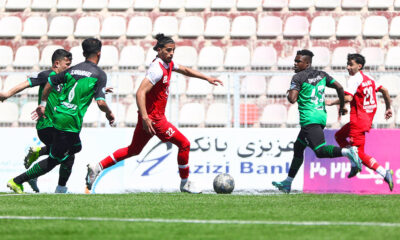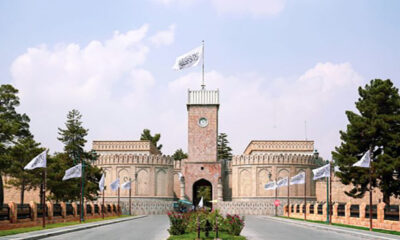Latest News
A threat at Kabul’s southern gate: a security overview of Logar province
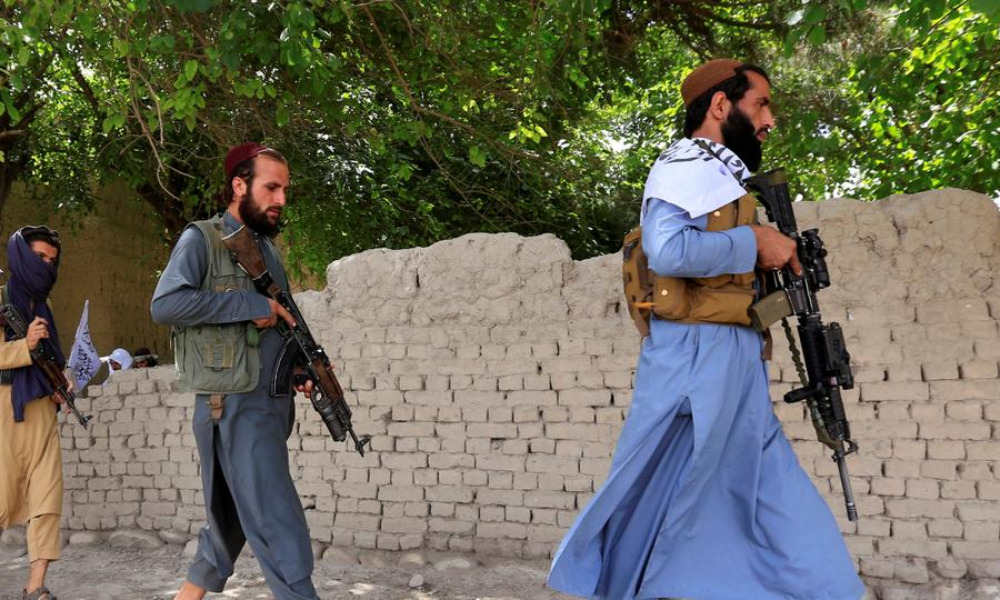
A Kabul-based security analyst and former high-ranking Afghan government official has said the increase in insurgent activity in “contested” Logar province might be part of an encirclement strategy of Kabul by the Taliban for when foreign troops withdraw.
In a new report by Afghanistan Analysts Network (AAN) the volatility of the strategic province, which is the southern gateway to Kabul, was highlighted earlier this month during a visit to Logar by President Ashraf Ghani.
During the president’s visit, the Taliban hit the provincial capital with eight mortar rounds during and after his speech.
In the days leading up to the president’s visit, the Taliban also carried out attacks on police checkpoints on the outskirts of the provincial capital.
According to AAN, the government only controls parts of three of Logar’s seven districts, which provides the Taliban with positions closer to Kabul than anywhere else.
In its report, AAN said between April and mid-July 2020 it had analyzed Logar’s trends of insecurity and found that residents blame the insurgent activity on poor government leadership. However, the government blames a lack of cooperation by the population on the situation.
AAN stated they also found significant popular sympathies for the Taliban – with the local perception being the group was the powerful entity in the war.
Logar, with its provincial capital Pul-e Alam located only about 60 kilometers to the south of the capital Kabul, is a strategically extremely important province.
The province’s second-largest town, Muhammad Agha, is situated only 23 kilometers beyond Kabul’s city limits.
Out of the six rural districts and the one surrounding Logar’s capital Pul-e Alam, the government officially claims to control three: the provincial capital, Khoshai and Muhammad Agha.
But AAN reports that security analysts and local sources give a different picture.
Local sources interviewed by AAN say the Taliban are present in many villages just four kilometers from Pul-e Alam. Villages there were targets of recent Afghan government forces’ clearing operations.
In the three southern districts – Baraki Barak, Charkh and Kharwar – the government only holds the district centers or small areas around them. Local residents said Khoshai was also contested, with half of the district controlled by the Taliban and half by the government. The situation in Azra is even more precarious, AAN reported.
This degree of control provides the Taliban with positions closer to the capital than in almost any other province.
Earlier this year, on 11 April 2020, residents of a number of districts, including residents of Pul-e Alam, gathered in Logar’s capital and called on the Taliban to cease their operations, stop attacking the Afghan army and get ready for peace talks with the Afghan government. The participants included tribal elders and pro-government people.
AAN reported that last year, Taliban activity particularly increased along the Logar part of the Kabul-Gardez highway. Pul-e Alam and Muhammad Agha districts combined accounted for many Taliban attacks in 2019.
This led to increased counter-operations by Afghan and international troops in autumn of 2019, including “unprecedented” levels of airstrikes and night raids along the highway, but also against Taliban logistic structures deeper in the province and particularly against insurgent networks operating from Logar into Kabul.
As a result, analysts registered the “highest level” of monthly conflict intensity on record in July 2019.
Although this had somewhat “diminished” Taleban operational capacities, there were still between over 40 and 60 Taliban attacks per month from May to September 2019.
On average, this was ten less than in 2018 when the season of significant fighting was longer, from April to October.
Local residents in Pul-e Alam and in the districts told AAN that since the beginning of the new Afghan year (April) and the start of the ‘spring fighting season’ in the country in late March, the Taliban have intensified attacks on government security posts throughout all districts of the province as well as on the outskirts of the provincial capital, and on a stronger scale than in any other year since the insurgency started in this province.
According to them, they have rarely experienced a day or two in which the Taliban have not carried out an attack.
A tribal elder in Charkh district told AAN that some years ago, he had invited the district governor and other officials to his home around 35 kilometers away from the district center, and the district governor had indeed come. But now, he said, the district governor could not come to his district center without a huge number of armed forces protecting him.
This trend has been confirmed by the Kabul based security analysts who said that the number of security incidents in March this year was three and a half times more in Logar province than in March 2019.
AAN also reported that the wave of assassinations of people working in the current political system continued over the entire period.
The most high-profile case was the kidnapping and shooting of former senator Abdul Wali Ahmadzai on June 9.
Ahmadzai had at the time been working for the Independent Directorate of Local Governance (IDLG).
A spokesman for the provincial governor accused the Taliban of the killing.
In March, a member of the Logar Provincial Council was assassinated in Kabul and in early June the Taliban shot dead two sisters, one of them reportedly the wife of an intelligence official at the Ministry of Interior, the other a visitor.
On 6 July, Nafisa Hejran, a female provincial council (PC) member, and her driver were wounded in a shooting in the provincial capital. Her colleague Nasir Ghairat, along with three guards, was killed in Kabul on 8 March.
Most residents of Logar that AAN spoke with, believe that the Taliban are behind the recent killings.
According to AAN, there are several reasons why many residents of Logar have a certain sympathy for the Taliban and why, according to some residents, they have contributed a large number of fighters to the Taliban.
A Logar resident told AAN that local Taliban ranks have been increased over recent years by former Afghan National Army and Afghan National Police members who did not extend their contracts.
“It is not clear, though, how much of this was voluntary or the result of coercion – the Taliban are able to pressure families when their sons return to their villages of origin – or whether this includes infiltration in order to obtain military training,” AAN reported.
A civil society activist said he thinks this is due to the “abnormal situation” of war.
He said people witness that when a government soldier is killed, he or his family are not taken care of by the government, but if a Taliban fighter is killed, the Taliban writes “poems praising him and his bravery is sung everywhere,” reported AAN.
According to the network, the activist said this contributes to pulling parts of the young generation toward the Taliban. He said under normal conditions everyone would prefer the presence of the government.
AAN also stated that at a higher level, the fact that the Taliban’s political office in Qatar includes two prominent representatives from Logar, Mullah Abas Stanakzai, and Mawlawi Shahabuddin Delawar, also contributes to a level of grassroots support, i.e. pride in being represented.
Almost all the respondents told AAN that the increasingly abusive behavior of government security forces – including the uprising forces and Afghan Local Police – have caused the people to be sympathetic to the Taliban, which in turn further enforced their presence in Logar.
In conclusion, AAN stated that for the Taliban, Logar’s strategic importance lies in its proximity to Kabul.
Together with consolidated positions in neighboring provinces such as Maidan Wardak, western Nangarhar and Surobi, the eastern-most district of Kabul (where fighting had increased recently), Logar is part of a belt that could cut off the capital from southern and eastern Afghanistan if the military situation escalates into an endgame scenario.
In Logar itself, they have been able to regularly attack the government forces in both the provincial capital and the districts.
To read the full report CLICK HERE https://www.afghanistan-
Latest News
Girls’ education is a ‘vital issue’ for Afghanistan: Karzai
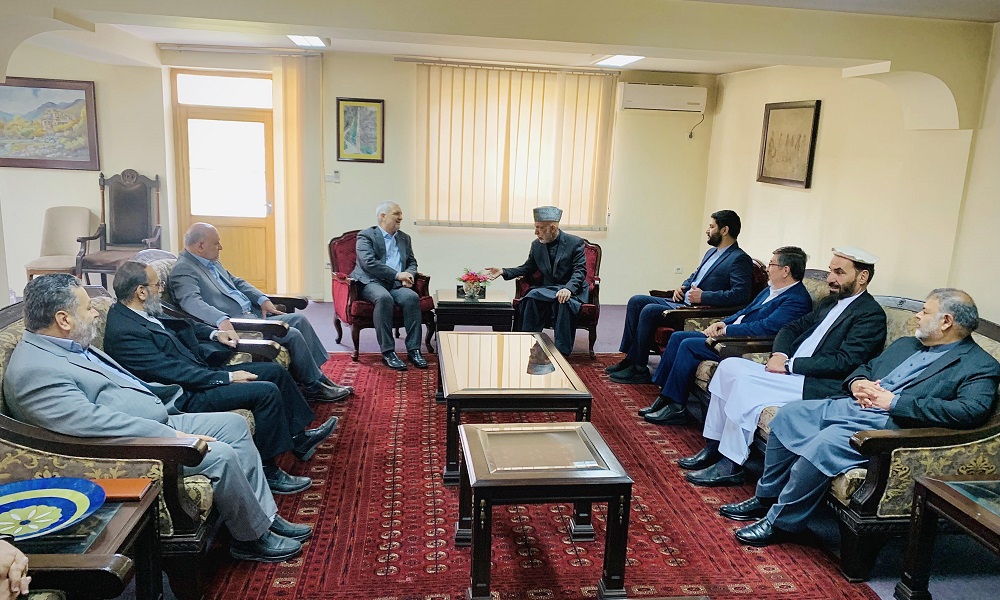
Former president Hamid Karzai said in a meeting with Iran’s ambassador and special representative, Hassan Kazemi Qomi, that education of girls was a “vital issue” for Afghanistan.
Karzai said he appreciated Iran’s cooperation and its standing with the Afghan people, especially Iran’s contributions to education in Afghanistan.
During the meeting, Karzai said peace and stability in the region are in the interest of all regional countries.
Latest News
Uzbekistan’s humanitarian aid arrives in Balkh
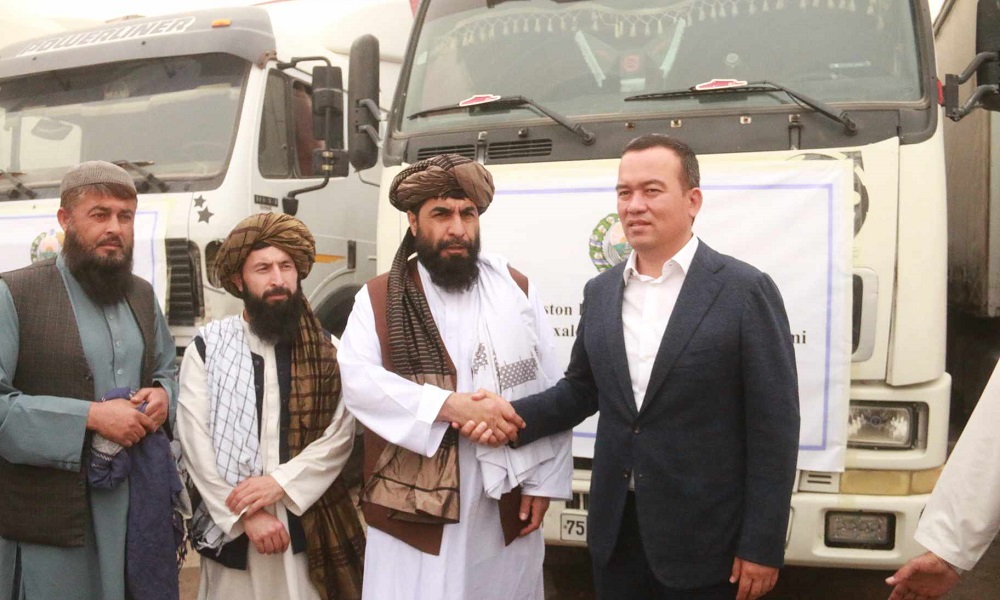
A shipment of humanitarian aid from Uzbekistan was handed over on Thursday to the local officials of Balkh province in the trade port of Hairatan.
Local authorities said the aid, which includes flour, oil, wheat, sugar and meat, has been handed over by Uzbekistan’s Surkhandarya governor to the governor of Balkh.
The governor of Surkhandarya stated the purpose of sending this aid was to support the people of Afghanistan and stressed the need for the development of good relations between the two countries.
Latest News
Afghanistan’s problems caused more damage to Pakistan than 3 wars with India: Durrani
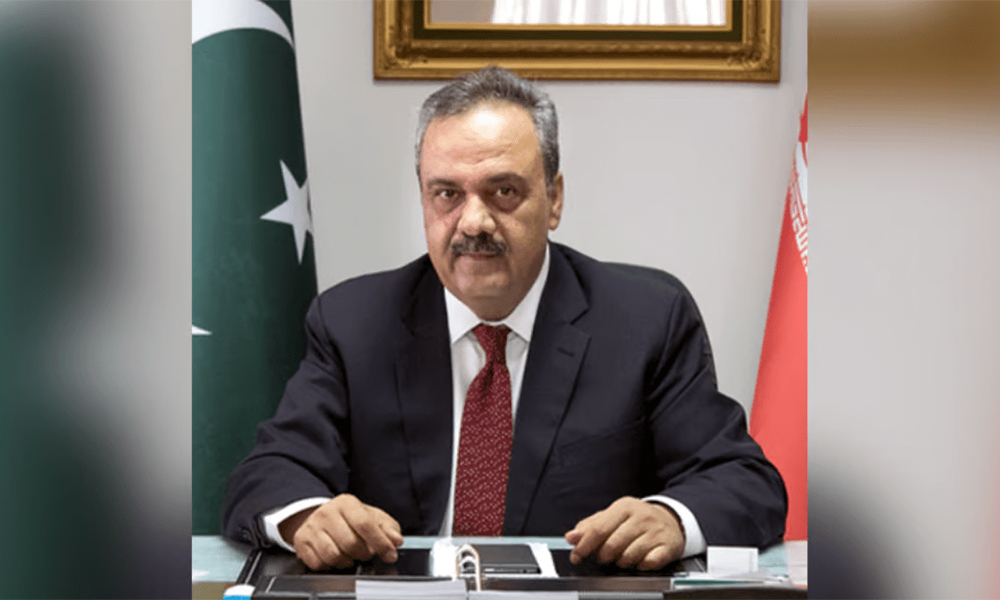
Islamabad’s special envoy for Afghanistan Asif Durrani said on Wednesday that Pakistan has suffered more due to Afghanistan’s internal situation than Pakistan has suffered in three wars with India in terms of blood spilt and finances drained.
Durrani said at a one-day International Conference titled “Pakistan in the Emerging Geopolitical Landscape”, which was organized by the Institute of Strategic Studies Islamabad (ISSI) and the German Friedrich Ebert Stiftung (FES), that over 80,000 Pakistanis died in the two decades of the War on Terror and that his country was still counting its dead and injured.
“After the withdrawal of NATO forces, it was hoped that peace in Afghanistan would bring peace to the region. However, such expectations were short-lived,” he said.
He also stated that attacks by the Tehreek-e-Taliban Pakistan (TTP) militant group on Pakistan’s border areas increased by 65 percent, while suicide attacks increased by 500 percent.
“The TTP’s enhanced attacks on Pakistan while using Afghan soil have been a serious concern for Pakistan. Another worrying aspect is the participation of Afghan nationals in these attacks,” he said.
Durrani also said Pakistan had suffered geopolitically since the Soviet Union invaded the neighboring country.
“The post-9/11 world order has negatively impacted Pakistan. Apart from losing 80,000 citizens’ lives, including 8,000 law enforcement agency personnel, the country’s economic opportunity cost is estimated at $150 billion,” Durrani said.
Talking about the future outlook for Pakistan in the regional context, Durrani said that while “our eastern neighbor is likely to continue with its anti-Pakistan pursuits, the western border poses an avoidable irritant in the short to medium term.”
However, he said Pakistan can overcome its difficulties with Afghanistan, including the TTP challenge.
-
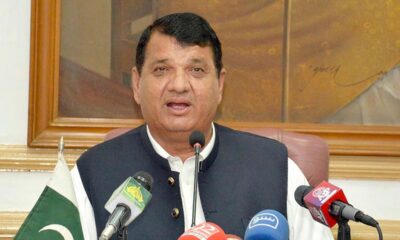
 Latest News4 days ago
Latest News4 days agoPakistan’s frontiers minister stresses ‘dignified’ return of Afghan refugees
-
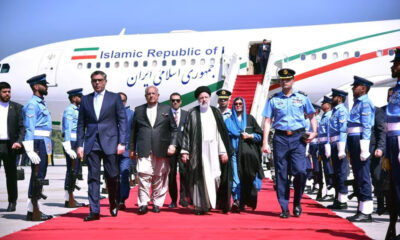
 Regional3 days ago
Regional3 days agoIranian president lands in Pakistan for three-day visit to mend ties
-
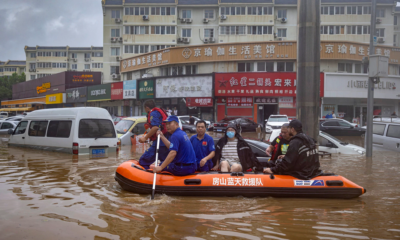
 Climate Change4 days ago
Climate Change4 days agoMassive river flooding expected in China, threatening millions
-
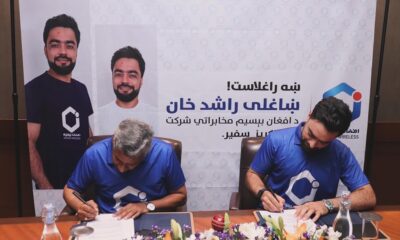
 Latest News2 days ago
Latest News2 days agoRashid Khan named AWCC’s brand ambassador
-
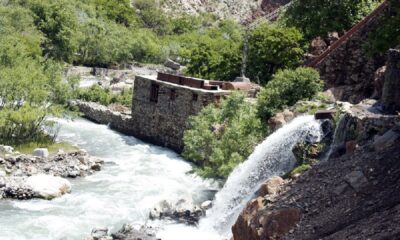
 Latest News5 days ago
Latest News5 days agoChinese keen to invest in Panjshir-Kabul water conduit project
-
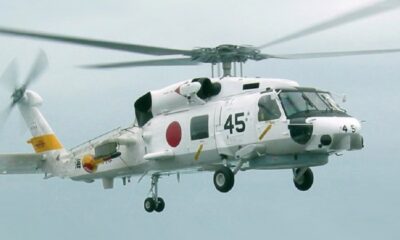
 World4 days ago
World4 days agoTwo Japan navy helicopters crash, one body found, 7 missing
-

 Sport3 days ago
Sport3 days agoKolkata beat Bengaluru by one run in IPL as Kohli fumes at dismissal
-

 Sport3 days ago
Sport3 days agoACL: Aino Mina 3-0 Istiqlal Kabul; Attack Energy 3-0 Khadim


